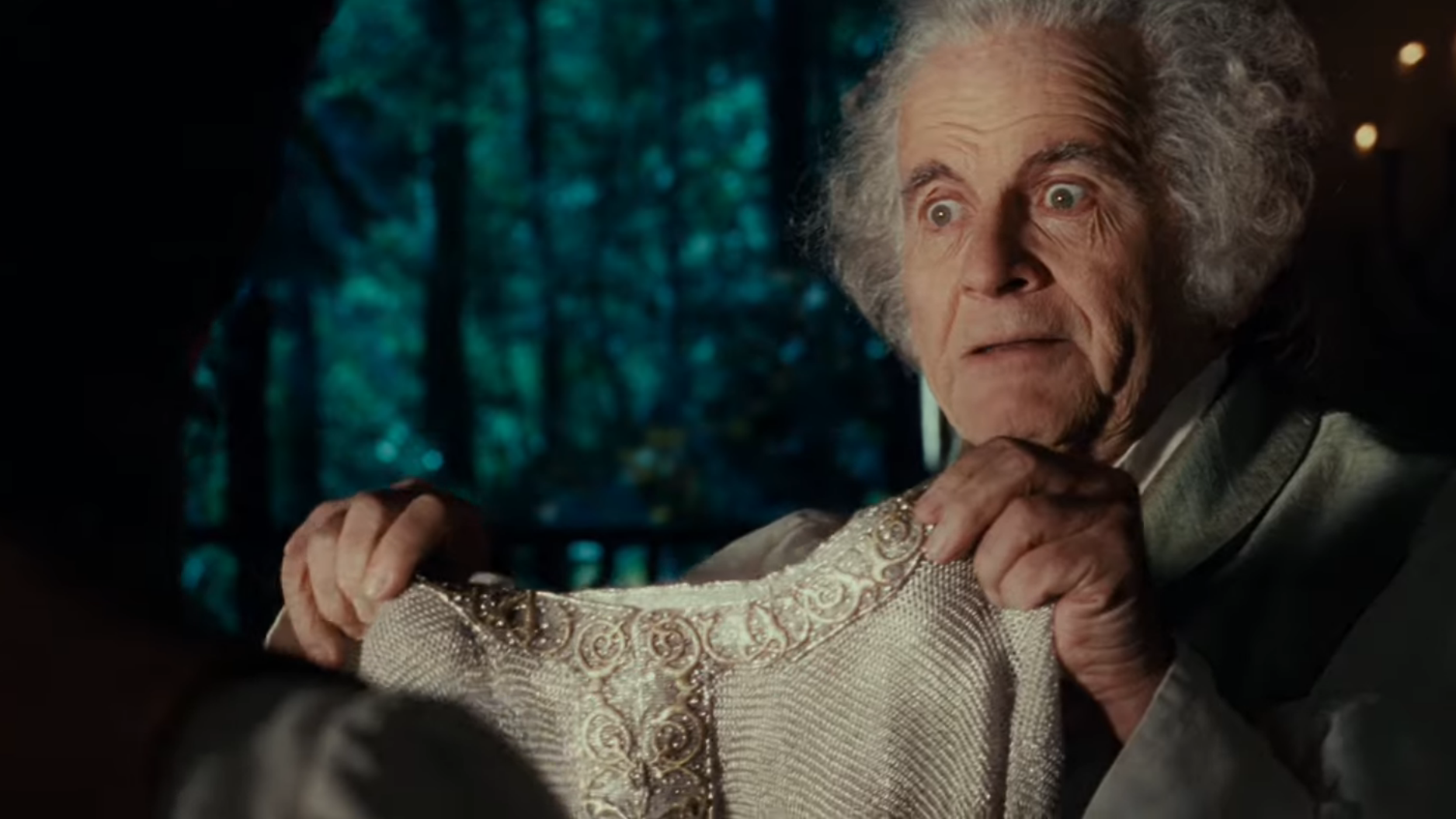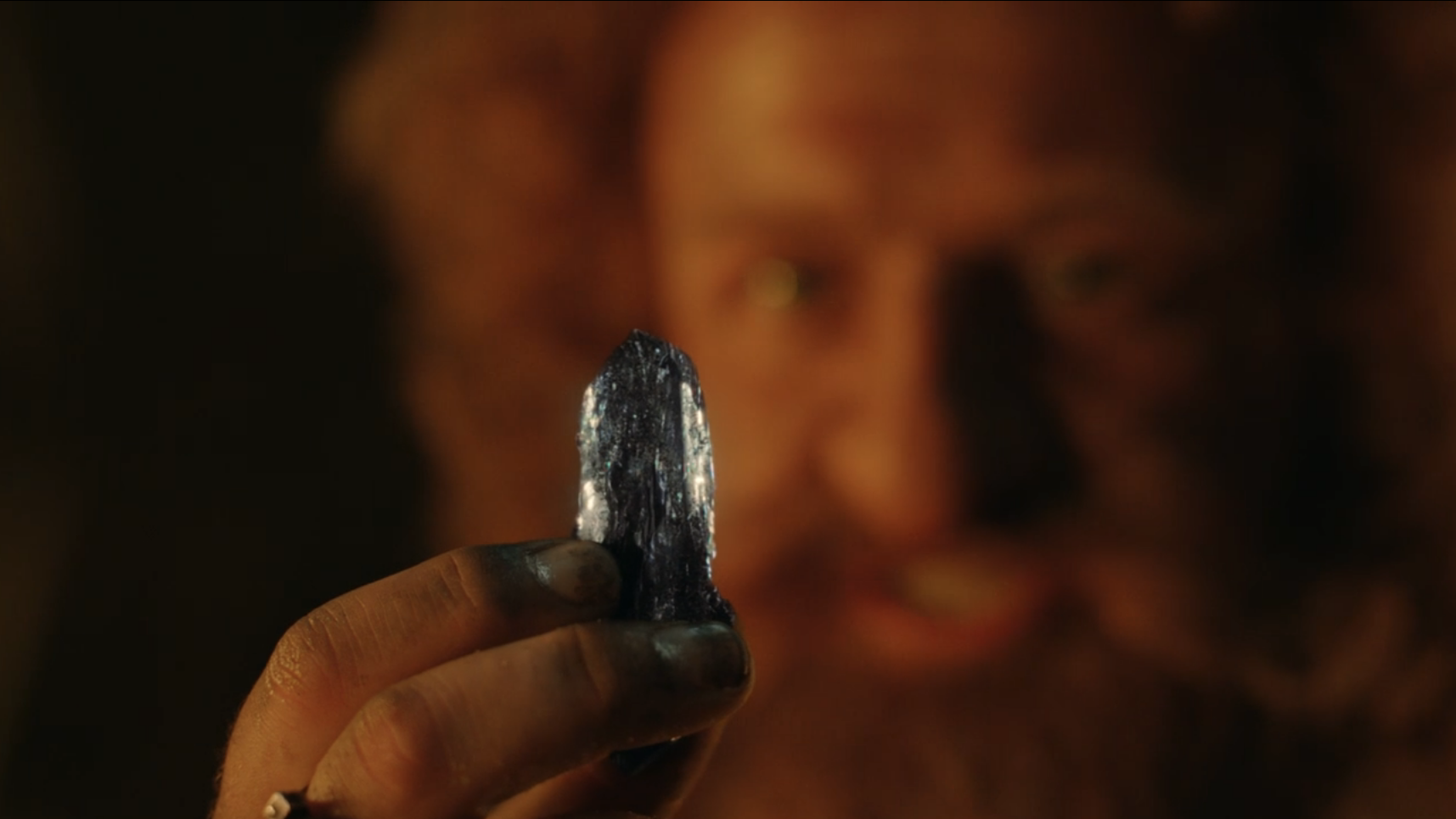Warning: The following article contains spoilers from Lord of the Rings: The Rings of Power episode four.
In episode four of Lord of the Rings: The Rings of Power, we learn exactly what it is that Durin III and his son Durin IV wish to keep secret. The dwarves of Khazad-dûm have stumbled across míthril, a special type of metal, which is “light as a feather, and hard as dragon’s scales” according to Bilbo Baggins, years down the line. This metal would become a precious commodity, one that would bring great wealth to the dwarves, but will ultimately lead to their downfall.
Spoilers ahead.
Even though we have just witnessed míthril’s discovery in the Amazon series, Lord of the Rings fans are already familiar with the much-desired metal after Bilbo gave Frodo a vest made of it in The Fellowship of the Ring. In his novels, this was where Tolkien first brought up mithril, later retroactively adding it into his third revision of The Hobbit in 1966, having previously only been described as a shirt of “silvered steel.”

This “kingly gift” is given to Bilbo after his adventure helping to liberate the Lonely Mountain of the dragon, Smaug, with Thorin Oakenshield and his company of dwarves. Years later, when entering the mines of Moria in The Fellowship of the Ring, Gandalf commented on Bilbo’s old gift, stating that the hobbit never knew its true worth, which was “greater than the value of the whole Shire and everything in it.” This was the moment Frodo learned exactly what his uncle had given him, a priceless míthril shirt that would go on to save him numerous times. Another notable míthril item in the books and adaptions would be Galadriel’s ring of power, Nenya.
Although míthril is brought up a fair amount of times in Tolkien’s work, there isn’t a formal origin story given to the rare and valuable metal that so many desire. Hard-core fans will know that it is found predominantly in Khazad-dûm. There were also hints that there may have been míthril in Númenor and Aman, The Blessed Land, but as one sank at the end of the Second Age and the other is near impossible to get to, Khazad-dûm would be the only producers of the precious ore.
However, the specifics of the metal’s discovery were never mentioned and this is where the show has retconned Tolkien’s work, adding its own custom-made lore. In the series, it is Prince Durin’s wife Disa (an entirely new character created for the series) who finds the ore after mining under the Mirrormere Lake. It is also revealed that the excavation of the ore from the rock is a perilous one, so much so that Durin’s father has banned him from continuing to mine after a cave collapse risked the lives of the dwarvish miners.

Worried that news of the ore will travel and cause others to seek it out, the dwarves are keeping the knowledge close to their chest, with Durin forcing Elrond, the half-elf, to swear he will not tell a soul. Elrond is also gifted a small piece of the metal, which he names míthril. Whether Elrond sticks to his promise or not is yet to be seen, but news of the míthril does become wildly known and brings vast wealth to the realm of Khazad-dûm.
Tolkien fans will know that from here on, this metal will be both a blessing and a curse. Though it brings great wealth to the dwarves, it is the main reason why the splendor of Khazad-dûm — currently seen in the Rings of Power series — turns into the barren, goblin-filled Mines of Moria. The dwarves mining for míthril were possessed by extreme greed and ended up digging too deep during the Third Age, awakening a former servant of Morgoth, a Balrog, in the process.
The Balrog destroyed the dwarvish kingdom, killing Durin VI and his son, earning it the nickname, Durin’s Bane. After this, the kingdom was abandoned and left to ruin. After the production of míthril was halted, it only increased the rarity of existing míthril, such as Frodo’s mail shirt.
The Amazon series has added many new aspects to this fantastical universe, including new characters and events that never happened in Tolkien’s work. Though for some fans, this has been a difficult pill to swallow, with the makers of the series only having access to The Lord of the Rings and The Hobbit appendixes new material is indeed needed to pad out the storytelling. Also, thankfully, this retconning of the history of míthril has not done anything yet that goes in direct defiance of the source material and merely adds new layers to the lore and history of Middle Earth.
Lord of the Rings: Rings of Power airs weekly, on Fridays, on Amazon Prime Video.











Published: Sep 24, 2022 09:18 am